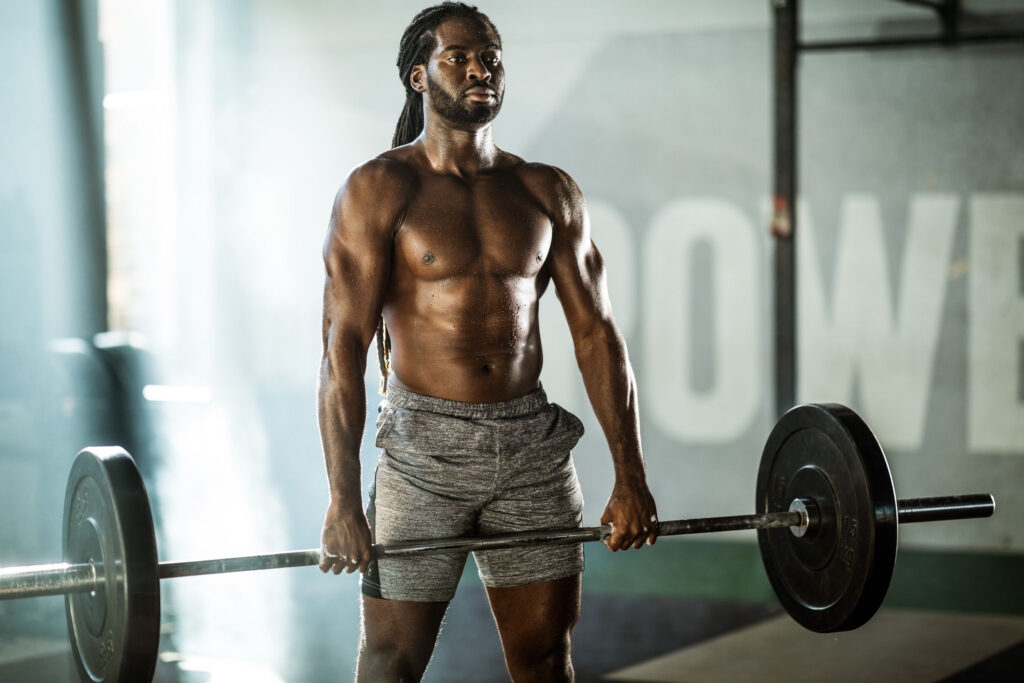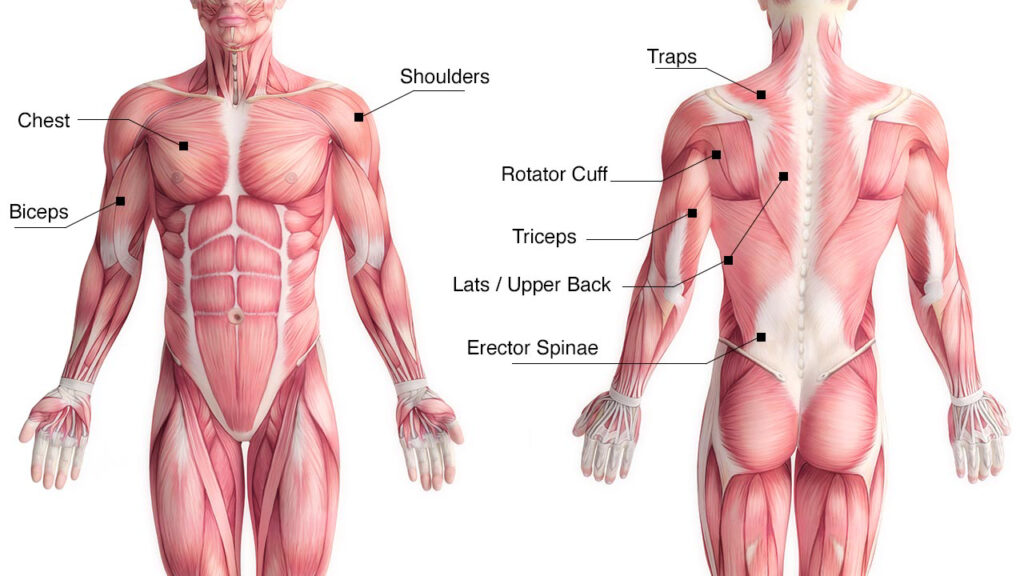Training smart helps you achieve better gains. Moreover, pairing muscle groups can boost workout efficiency. In addition, grouping synergistic muscles improves performance and recovery.

Understanding Muscle Group Synergy
Muscle synergy matters because certain groups work together naturally. Furthermore, you benefit from coordinated movements that maximize strength. Also, training complementary muscles saves time and enhances overall balance.
The Science Behind Synergy
Research shows that muscle fibers interact during compound movements. Consequently, you engage multiple muscles with a single exercise. Moreover, coordinated training improves motor unit recruitment and energy use.
Benefits of Grouping Muscles
Pairing muscles yields several advantages. For example, you can perform compound exercises that target more than one group. Additionally, you achieve better balance and reduce workout time, while minimizing fatigue.
Common Training Splits
Training splits define how you divide workouts throughout the week. Consequently, you can focus on specific groups on each session. In addition, splits help you manage recovery and prevent overtraining.
Upper Body and Lower Body Split
This split divides your workouts into upper and lower regions. Moreover, you target major muscle groups with dedicated sessions. Additionally, you allow each region enough time to recover before the next workout.
Push/Pull/Legs Routine
This routine separates pushing muscles, pulling muscles, and legs. Thus, you train similar functions together. Furthermore, you optimize workload distribution and enhance recovery time.
Best Muscle Group Pairings
Research and practice reveal effective pairings. Moreover, proper combinations improve strength and hypertrophy. Additionally, you can rotate routines to keep workouts fresh.
Chest and Triceps
Chest and triceps naturally work together during pressing movements. Consequently, you engage both groups in exercises like bench presses. Moreover, you experience improved performance and time efficiency.
- Benefits include:
- Enhanced compound strength
- Reduced workout time
- Improved muscle coordination
Back and Biceps
Back and biceps complement each other in pulling movements. Furthermore, exercises like rows and pull-ups work both groups simultaneously. In addition, this pairing boosts grip strength and overall arm size.
- Key points:
- Better muscle activation
- Balanced development
- Streamlined training sessions
Shoulders and Abs
Shoulders stabilize the body during many exercises, while abs support core stability. Moreover, pairing these groups improves overall posture. Additionally, you engage the core during overhead lifts for added benefit.
Legs and Glutes
Legs and glutes play crucial roles in lower-body strength. Consequently, you achieve explosive power and stability by training them together. Furthermore, compound movements like squats and lunges target both groups effectively.
Training Principles and Techniques
Effective training follows clear principles that guide exercise selection. Moreover, you must balance intensity, volume, and recovery. Additionally, choosing the right exercises maximizes muscle stimulation.
Compound vs. Isolation Exercises
Compound exercises engage multiple muscle groups at once. Consequently, you work synergistic muscles during lifts like squats and bench presses. Moreover, isolation exercises help target weaker areas for balance and definition.
- Compound benefits:
- Higher calorie burn
- Improved functional strength
- Isolation benefits:
- Targeted muscle growth
- Enhanced muscle symmetry
Volume, Intensity, and Recovery
Training volume and intensity drive muscle growth. Thus, you adjust reps, sets, and weights based on goals. Moreover, proper recovery ensures muscle repair and reduces injury risk. In short, a balanced program combines challenging workouts with adequate rest.
Scientific Research on Muscle Group Training
Studies provide evidence on effective muscle grouping for hypertrophy. Moreover, research highlights the importance of balanced training programs. Additionally, scientific analysis guides practical workout design.
Studies on Hypertrophy and Strength
Recent research shows that compound exercises yield greater muscle growth. Consequently, you benefit from training groups together rather than in isolation. Furthermore, studies suggest that split routines improve overall strength gains.
Physiological Mechanisms
When you train synergistic muscles, hormonal responses boost protein synthesis. Moreover, you stimulate muscle fibers more effectively during compound lifts. In addition, coordinated training improves neuromuscular efficiency, which leads to faster strength gains.
Expert Opinions and Recommendations
Top fitness experts share insights on training pairings. Furthermore, coaches recommend grouping muscles based on movement patterns. Additionally, experts advocate for routines that balance push, pull, and leg exercises.
Coaching Insights
Professional trainers emphasize the importance of exercise order. Consequently, you should train larger muscle groups before smaller ones. Moreover, coaches advise pairing muscles that naturally assist each other during lifts for better results.
Personal Trainer Perspectives
Many trainers recommend combining chest and triceps or back and biceps for efficiency. Moreover, they suggest alternating routines to prevent plateaus. In addition, you receive personalized advice based on body type and goals, which enhances progress.
Programming Your Workout
Designing a workout program requires careful planning and adjustments. Furthermore, you must set clear goals and measure progress. Additionally, a well-structured program optimizes results over time.
Creating a Balanced Schedule
A balanced schedule includes varied muscle group pairings. Consequently, you allocate days for upper body, lower body, and full-body workouts. Moreover, a consistent schedule prevents overtraining while ensuring adequate recovery.
Adjusting Based on Progress
You should review your routine periodically and adjust based on progress. Furthermore, progressive overload remains key to continuous improvement. In addition, tracking performance metrics helps you modify volume and intensity appropriately.
Nutrition and Recovery for Muscle Growth
Nutrition and recovery play vital roles in muscle development. Moreover, you need proper fuel and rest to support training gains. Additionally, a balanced diet and sleep regimen boost performance.
Macronutrient Considerations
A diet rich in protein, complex carbohydrates, and healthy fats supports muscle repair. Consequently, you consume enough calories to fuel your workouts. Moreover, balanced nutrition accelerates recovery and muscle growth.
Importance of Rest and Recovery
Rest days allow muscles to repair and grow stronger. Furthermore, quality sleep contributes to hormonal balance and muscle recovery. In addition, you reduce injury risk by including active recovery and stretching in your routine.
Advanced Techniques for Training Together
Advanced techniques help experienced lifters break plateaus and optimize gains. Moreover, you can incorporate varied methods to challenge muscles further. Additionally, these techniques offer new stimulus and excitement.
Supersets and Compound Sets
Supersets pair two exercises with minimal rest between sets. Consequently, you work opposing or complementary muscle groups consecutively. Moreover, compound sets target the same muscle group to intensify fatigue and growth.
- Benefits include:
- Increased workout density
- Enhanced muscle pump
- Improved endurance
Drop Sets and Rest-Pause Methods
Drop sets reduce weight after reaching fatigue, and rest-pause methods involve brief rests between sets. Consequently, you push muscles beyond normal failure. Moreover, these techniques enhance metabolic stress and hypertrophy.
Common Myths About Muscle Group Training
Many myths surround the topic of training muscle groups together. Moreover, debunking these myths clarifies effective workout strategies. Additionally, evidence-based insights guide you toward smarter training choices.
Myth: You Must Train Isolated Muscles Separately
Some believe isolating muscles yields better growth. However, research shows compound exercises offer superior benefits. Consequently, you achieve better strength and balance by training muscles together.
Myth: More Is Always Better
Many assume that training every muscle group every session works best. In contrast, targeted routines with proper recovery lead to optimal gains. Moreover, smart programming prevents overtraining and maximizes progress.

Case Studies and Real-World Examples
Real-world examples offer practical insights into muscle group training. Furthermore, case studies reveal the effectiveness of different training splits. Additionally, these examples highlight how tailored routines yield impressive results.
Successful Training Programs
Top athletes often use split routines that pair synergistic muscles. Consequently, you see improved strength and balance in their performance. Moreover, athletes rotate routines to prevent plateaus and sustain progress.
Comparative Analyses
Comparative studies demonstrate that pairing muscles like chest and triceps leads to higher strength gains than isolating them. Furthermore, research shows that combining back and biceps in one session improves overall workout efficiency. In addition, these analyses help you design your personalized program.
Future Directions in Muscle Group Training
Ongoing research continues to refine training strategies. Moreover, emerging technologies provide deeper insights into muscle activation. Additionally, future studies may further optimize how you pair muscle groups.
Innovations in Exercise Science
New devices measure muscle activity in real time. Consequently, you can fine-tune exercises for maximum efficiency. Moreover, wearable technology offers personalized feedback on training intensity and recovery.
Integrating Technology with Training
Apps and digital platforms now help track workouts and progress. Furthermore, you receive data-driven recommendations based on performance. In addition, these tools empower you to adjust routines dynamically for better results.
Conclusion
Training synergistic muscle groups enhances both strength and efficiency. Consequently, pairing muscles like chest with triceps or back with biceps maximizes workout benefits. Moreover, you reduce workout time while promoting balanced development. In short, evidence-based programming and proper recovery remain essential for optimal gains.
